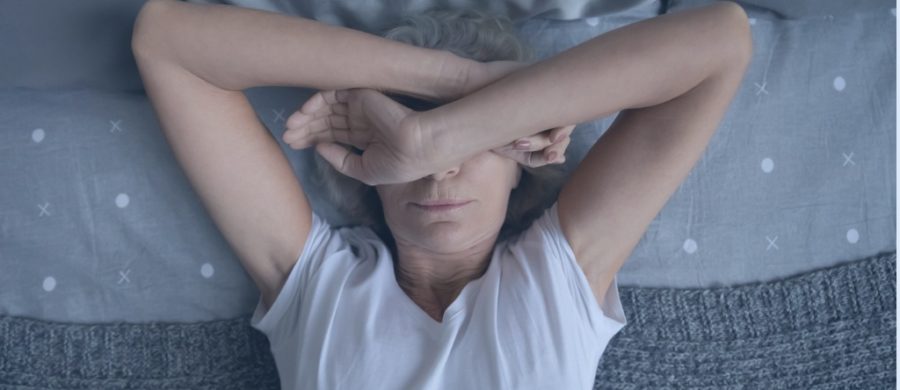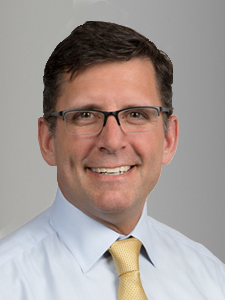Sleep apnea is a severe medical condition that causes you to repeatedly stop breathing for brief moments while you sleep. One in five adults has mild obstructive sleep apnea (OSA), and one in 15 adults has moderate-to-severe OSA.
“With more than 20 million Americans experiencing OSA, its prevalence is similar to diabetes and asthma,” said sleep expert Thomas Minor, MD, with Boulder Valley Pulmonology. “Sleep apnea is also more common at higher altitudes.”
Fortunately, very effective treatments exist for OSA, as Dr. Minor and his co-presenter, Dr. Mark Hunter, an Ear, Nose, and Throat (ENT) specialist with Boulder Medical Center, described during a recent free online lecture hosted by Boulder Community Health (BCH).
What is Obstructive Sleep Apnea, and What Are Its Risks and Consequences?
Dr. Minor explained, “OSA occurs when the muscles at the back of the throat, mainly the tongue and soft palate, temporarily relax while we’re sleeping. This results in narrowed or even closed airways, causing us to repeatedly stop breathing briefly while we sleep.”
If left untreated, OSA decreases life expectancy and increases the risk of severe conditions, including high blood pressure, stroke, heart failure, irregular heartbeat, artery disease, dementia, and type 2 diabetes. Dr. Minor added, “However, if sleep apnea is treated, we can reduce these health risks.”
Dr. Minor emphasized, “All our organs have their own needs for sleep to enable them to repair and recover from all the work they did during the day.”
Symptoms of Sleep Apnea
The most common signs and symptoms of OSA include:
- Loud Snoring
- Episodes in which you Stop Breathing During Sleep (reported by another person)
- Gasping for Air During Sleep
- Awakening with a Dry Mouth
- Morning Headache
- Difficulty Staying Asleep (insomnia)
- Excessive Daytime Sleepiness (hypersomnia)
- Difficulty Paying Attention
- Irritability
Dr. Minor said, “Because you’re not sleeping well, you’ll have trouble concentrating, you may fall asleep during the day or while driving, and you’re more likely to be irritable, have memory issues, become frustrated and agitated.”
He added, “While everyone who has sleep apnea snores, not everyone who snores has sleep apnea.”
Diagnosing Sleep Apnea
If OSA is suspected, sleep studies may be recommended to monitor breathing. These can be done at home or in a sleep laboratory.
Studies performed in a sleep laboratory also produced a more sophisticated analysis. “With the lab experience, it’s possible to test out sleep apnea treatments while you’re in the lab. These treatments include getting you started on Inspire® Upper Airway Stimulation, which Dr. Hunter will describe in a few minutes, putting you on continuous positive airway pressure, or placing an oral device in your mouth,” said Dr. Minor.
Treatments for Obstructive Sleep Apnea
CPAP Therapies
Your doctor may recommend a continuous positive airway pressure (CPAP) machine to prevent sleep apnea. A CPAP machine delivers enough air pressure to a mask to keep your upper airway passages open, preventing snoring and sleep apnea.
According to Dr. Minor, the advantages are:
- It’s most likely to be effective
- You can be treated within 24 hours
- Your healthcare provider will quickly know if the CPAP is effective
The disadvantages are:
- It can cause claustrophobia
- It’s not at all sexy
Oral Appliances
Oral appliances are custom mouthpieces. They pull the jaw forward to create a wider airway, allowing you to breathe more easily as you sleep. “Oral appliances aren’t as effective for those with severe sleep apnea. They can cause temporomandibular joint dysfunction (TMJ) and take longer to work,” said Dr. Minor. He also noted, “They are better at reducing snoring than correcting sleep apnea.”
Oxygen Therapy
Your healthcare provider may prescribe supplemental oxygen for you to use while you sleep. The oxygen is delivered through plastic tubing called a nasal cannula, typically several liters per minute.
“Oxygen therapy can be a good patch,” said Dr. Minor, “for those who can’t tolerate other therapies.” He added, “However, to know if it’s successful, you must return to the lab for another sleep study.”
Positional Therapy
Positional therapy involves wearing a special device around your waist or neck that helps keep you sleeping on your side. It gently vibrates when you start to roll over to sleep on your back, alerting your body to change position without waking you up.
Dr. Minor explained that positional therapy is designed to keep the sleeper in a position that minimizes breathing obstruction.
Inspire Upper Airway Stimulation – A minimally invasive surgical option
“We will always look at CPAP or some of the other devices used to alleviate sleep apnea before we jump into surgery,” stated Dr. Hunter. “There is a newer therapy with successful outcomes called hypoglossal nerve stimulation or Upper Airway Stimulation. The main company that supports this is Inspire Medical Systems.”
Inspire® Upper Airway Stimulation is an innovative mask-free treatment option for patients with moderate-to-severe obstructive sleep apnea (OSA) who can’t tolerate continuous positive airway pressure (CPAP).
How Inspire Works
Inspire is a minimally invasive surgical alternative. It uses an implantable device (similar to a pacemaker) to monitor every breath you take. Based on your unique breathing patterns, it delivers mild stimulation to a nerve that controls muscles at the back of your throat. By stimulating these muscles, the system keeps your airway open during sleep. With a handheld remote, you turn the device on before bed and off when you wake up.
What You Can Expect with Inspire
If you meet eligibility requirements, your physician will confirm that Inspire therapy is right for you.
“Inspire is a safe outpatient procedure,” Dr. Hunter explained. Two small incisions are made: one under the jawline and another at the upper chest. A sensor is placed near the ribs that signal the battery pack on the upper chest to open the airway while sleeping.”
About a month after the procedure, patients return to their everyday activities. “The battery,” said Dr. Hunter, “may need to be replaced after about 11 years. This is a simple procedure.”
Most insurance providers, including Medicare and VA, cover the procedure as a clinically proven therapy.
Statistics and Satisfaction
Inspire therapy is very successful. As of October 2020, there have been more than 100 peer-reviewed publications on Inspire therapy. These publications show that patients using Inspire therapy experience significant benefits:
- 79% reduction in sleep apnea events, resulting in a healthier, restful night’s sleep
- 88% reduction in snoring
- 94% of people are satisfied with Inspire
- 96% of patients say Inspire is better than CPAP and would recommend Inspire to others
- Improved daytime functioning from better sleep
“Nationally, we know that people tolerate CPAP 50% of the time. With Inspire, we are seeing a satisfaction rate of 94%,” said Dr. Hunter. “There’s no uncomfortable mask, and they can sleep in different positions. The result is that people are getting a much greater benefit from the Inspire.”
Ear, Nose and Throat (ENT) at Boulder Medical Center
Board-certified ENT physicians Mark Hunter, MD, and Angela Paddack, MD, offer the full range of ENT care for adults and children.
- Sleep Apnea and Snoring, including Inspire® Upper Airway Stimulation Therapy
- Ear Conditions and Diseases
- Hearing Testing and Disorders
- Nose and Sinuses
- Disorders of the Voice and Throat
- Head and Neck Masses and Tumor
- Throat Problems such as Tonsillitis and Hoarseness
- Nasal and Sinus Problems, including Nasal Obstructions, Sinus Infections, Nosebleeds
- Non-invasive, Minimally-Invasive, and Su, Surgical Treatments
Resources
- Dr. Hunter’s Profile
- Dr. Paddack’s Profile
- Call for an Appointment: (303) 440-3073



